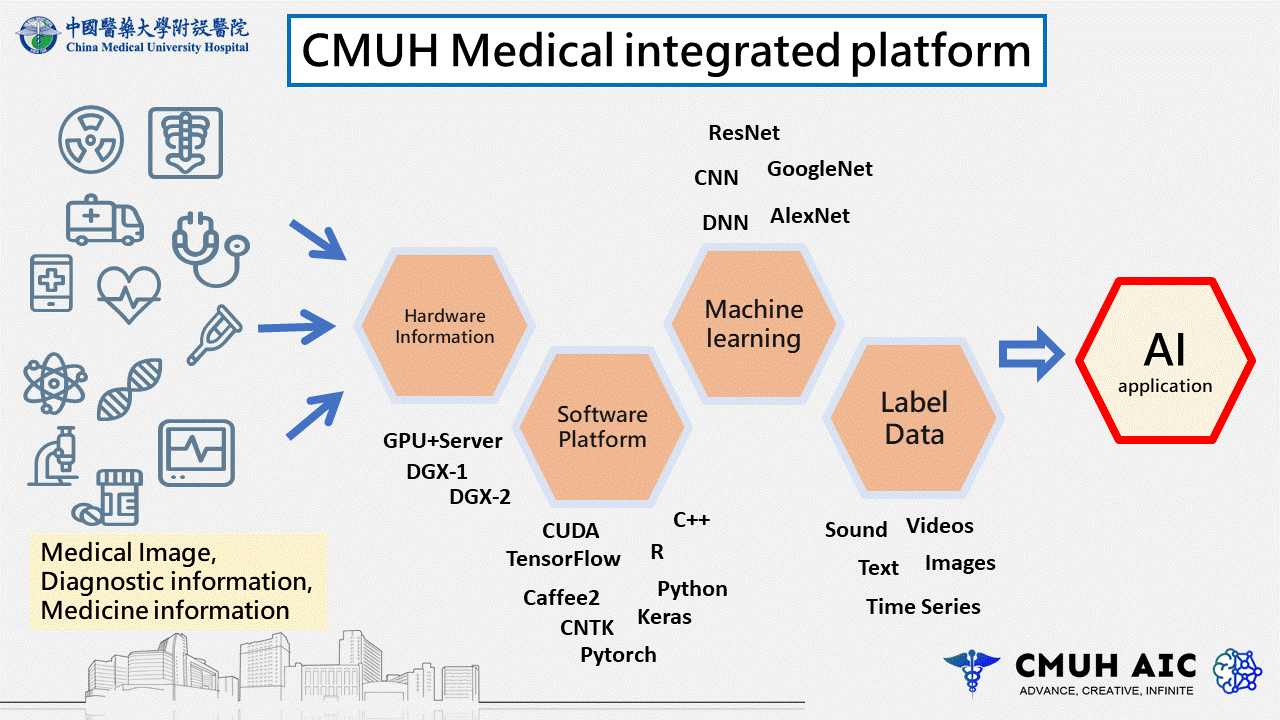Artificial Intelligence and Robotics Innovation Center
Department Introduction
Artificial Intelligence and Robotics Innovation Center
Department Introduction
AI center for medical diagnosis was established on August 21, 2017. Committed to applying high-value clinical medical data, establishing deep learning clinical prediction models, promoting AI application for clinical diseases, establishing a smart medical assisted diagnosis system, and improving medical quality through the cooperation of physicians and AI to achieve the goal of smart medical treatment. At present, AI center mainly develops AI applications in four major medical fields, combining big data and AI technology to provide experts diagnostic information and assist in professional medical decision-making.
Service
Medical imaging
Provide diagnostic information for doctors, such as: bone age assisted assessment, diabetic retinopathy, breast ultrasound tumor assisted detection, chest X-ray abnormal discrimination.
Electrophysiological data signal
Confirm the diagnosis of disease through long-term continuous recording or dynamic changes of data. Completed AI products such as ECG arrhythmia and acute myocardial infarction detection, heart sound abnormality discrimination, etc., which have successively included patients’ physiological and test data into the database of model training to increase the reliability and validity of disease detection.
Natural language processing technology (NLP)
A key technology for extracting useful information from medical texts, transforming unstructured medical texts into structured data containing important medical information, thereby improving the quality of medical systems and reducing operating costs. For example, the developing system: nursing voice assistant, which performs automatic voice analysis and text generation to improve the efficiency of nursing affairs.
Bioinformatics field
Through the combination of AI and large-scale genetic and databases of molecular biology , more information can be connected to explore trends and patterns of biological effects, such as SNP disease analysis, combined with genetic information and medical imaging for Multi-Omics will also achieve more comprehensive precision medical auxiliary applications.

Our Teams

Shih-Sheng Chang


Chia-Hung Kao






































